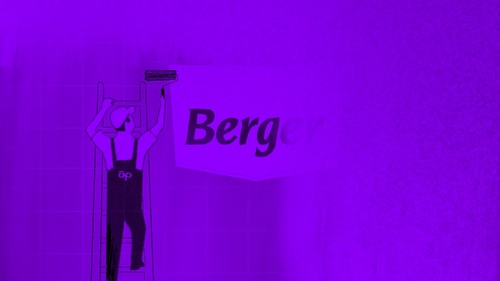For over a hundred years, the Indian trading industry was dominated by men with heavy-rimmed glasses and cigarettes in their hands, with one eye on the pulse of the market.
But, today the industry is witnessing an influx of new blood, sneaker-wearing youth, trading digitally on their laptops.
How did this transition happen?
Well, in the 2010s, the stockbroking world slowly got a digital makeover. And, leading that transformation were two of the top players — Zerodha & Upstox!
Both these players began their journeys at the same time, with seemingly the same model and now have collectively amassed a user base of 19M!
While Zerodha, a bootstrapped giant, multiplied to reach the INR 1000+ Cr profits mark, the second in line, VC-funded Upstox, dwindled in losses.
So, what happened there? Well, I attempt to break down just that by analysing Zerodha's and Upstox's divergent paths!
Stockbroker Twins: Parallels between Zerodha and Upstox!
It's surprising how similar Zerodha's and Upstox's origin stories are, given they are each other's strongest competition.
Both these companies were born during the aftermath of the financial crisis of 2008. Zerodha was founded by Nithin Kamath and Upstox by Ravi Kumar. Both Nithin and Ravi started trading when they were 16-17 years old.
Nithin, with his brother Nikhil, founded Zerodha in 2010. While Ravi, along with his brother Raghu & friend Shrini, launched Upstox in 2009.
The brother pairs had the same goal:
- democratize the industry,
- digitize the space - so people can trade on their laptops & eventually phones,
- increase transparency & simplify the processes
In 2015, Zerodha introduced the flat brokerage fee model. Earlier traders were charged a percentage of their trade value as the brokerage fee. But, under Zerodha's model, they would be charged
- Rs 20 per trade irrespective of the trade size
- Zero for equity investments
This was pivotal in disrupting the industry & making Zerodha a viral product among traders. Upstox followed suit and these two startups emerged as the top discount stockbrokers.
In contrast to these similarities, the domain where these startups differ is their funding source.
Zerodha was rejected by most VCs in the beginning. And, when their business flourished, they in turn rejected funding from those VCs.
Upstox, on the other hand, was always a VC darling. Out of a total of $81M invested across all stock brokers in India, 35% i.e. $29M has been pumped into Upstox!
Comparing Zerodha & Upstox's numbers
Zerodha & Upstox have cracked the discount model and raced past the traditional brokers like HDFC & ICICI.
Today, these 2 businesses have a market share of:
- Zerodha ➝ ~17%
- Upstox ➝ ~14%
But, even though these two businesses seem almost identical on the surface, the results they have generated are vastly different. Let's take a look at a few numbers to understand this better!
Revenue in FY21
Zerodha ➝ INR 2729 Cr
Upstox ➝ INR 386 Cr
Profit & Loss numbers in FY21
Zerodha ➝ (+) INR 1122 Cr Profits
Upstox ➝ (-) INR 72 Cr Loss
Total users on the platform
Zerodha ➝ 9 million
Upstox ➝ 10 million
Total active users (*users who trade at least once a year)
Zerodha ➝ 6.2 million
Upstox ➝ 5 million
So, while Upstox has quickly surpassed Zerodha in terms of the number of users, Zerodha's revenue is SEVEN times that of Upstox.
On top of that, while Zerodha's profits reached INR 1000+ crores, Upstox losses doubled in FY21!
So, where is all of Upstox's money going?
Now, of course, to figure out why these two startups went in such different directions, we will need to break down Upstox's expenses. Especially, the largest and most notable sums!
➝ Upstox spent a whopping INR 145 Cr on IPL ads
➝ Approximately 65% of Upstox's users join through referrals!
So, let's analyze the returns on these investments.
IPL Ads spend calculation
- In 2021, Upstox made a 3-year IPL deal spending INR 145 Cr. So, in 2022 their spend on IPL ads would be ⇒ INR 145 crores / 3 = INR 48.3 crores
- The total viewership of IPL in 2022 was 20 crores
- 80% of Upstox's total users are between the age of 18 to 35. So, that's essentially their target demographic. If we consider this age group (18-35), that's 35% of IPL viewership.
- Now, the typical TV ads conversion rate is ~0.7%. So, the total viewers converted to users would be ⇒ 0.7% of 7 crores = 4.9 lakh users
- Let's say all of these 4.9 lakh users open a Demat account on Upstox by paying the INR 199 fee, then Upstox earns ⇒ 4.9 lakhs * INR 199 = INR 9.75 crores
- So the Net Loss here would be ⇒ Expense - Revenue = INR 48.3 Cr - INR 9.75 Cr = INR 38.55 crores!
So, the target user base for Upstox is ⇒ 35% of 20 crores = 7 crore viewers
That's a total of INR 787 burned to acquire a single new user via these IPL ads!
Referrals & Free Stocks
Similarly, in the case of Referrals, Upstox pays the referrer INR 1200 to refer one user. That's a net loss of ~INR 1000.
In some cases, Upstox also used to guarantee INR 300 to 500 to both the referrer and the new user!
Apart from this, similar to Robinhood, Upstox would drop free stocks into individual users' Demat accounts to get them trading!
These very aggressive marketing spends have won Upstox its 10 million users while burning a lot of cash. In FY20 alone, Upstox spent 47 crores on ads and promotions which have only increased over the years.
On the other hand, Zerodha stands firm on its ZERO marketing spend policy which keeps its expenses super lean.
Zerodha vs Upstox: Whose strategy wins?!
Upstox's Strategy
Now, of course, burning cash is one reason for Upstox's massive losses. But, there is more to this story.
These stockbroking firms make money through their brokerage fees model. So, user acquisition would do the trick if they were following a subscription model. Meaning Upstox pays once to acquire the user and users pay a regular fee to Upstox.
But instead, Upstox earns money only when a trade is made. So, the goal is to make these users trade more stocks. Now, here's where Upstox's strategy is flawed.
You see there are essentially 3 groups of traders
- Group A ⇒ Equity investors who buy and hold stocks and sell them when their value goes up, account for 1% of the total trade volume
- Group B ⇒ Intraday traders. They account for 9% of the total trade volume
- Group C ⇒ Future and options traders. They account for the remaining 90% of the trade volume.
70% of Upstox's users are first-time investors from Tier 2 - 3 cities. So, Upstox is basically spending crores to get people in Group A that only make 1% of the transactions.
While VCs love to see Upstox's user base grow from 5 to 10 million in 6 months, the bottom line is that these users are not regular traders. And, Upstox can't rely on them to generate revenue!
Zerodha's Strategy
On the other hand, Zerodha very early realised that while they want to acquire Group A and Group B traders, they ultimately wanted to buildd the BEST platform for serious futures & options traders i.e. Group C.
When other stock broking firms emerged following the same Zerodha model, they had to differentiate themselves. So, they focused on building the best trading platform for these serious traders. And, all their free & organic marketing efforts were aimed to get these people.
So, while you won't see Zerodha's ad on your TV, the serious trading communities are in Zerodha's pocket.
This strategic move to focus on Group C users and building a trading platform for their needs has helped Zerodha multiply its profits year over year.
Now, of course, there is more nuance to why Upstox and Zerodha's numbers are what they are!
Upstox's ultimate goal through its ad campaign was to get young users to trade. And, they surely accomplished that.
Eventually, they want to expand to become a wealth management platform and diversify their products. But given the tough fintech market that's going to be tough. And, with dwindling active traders, it'll be interesting to see if Zerodha users plateau or fall.
But, we've got our eye on this dynamic & ready to report any new developments. So stay tuned! 😁







